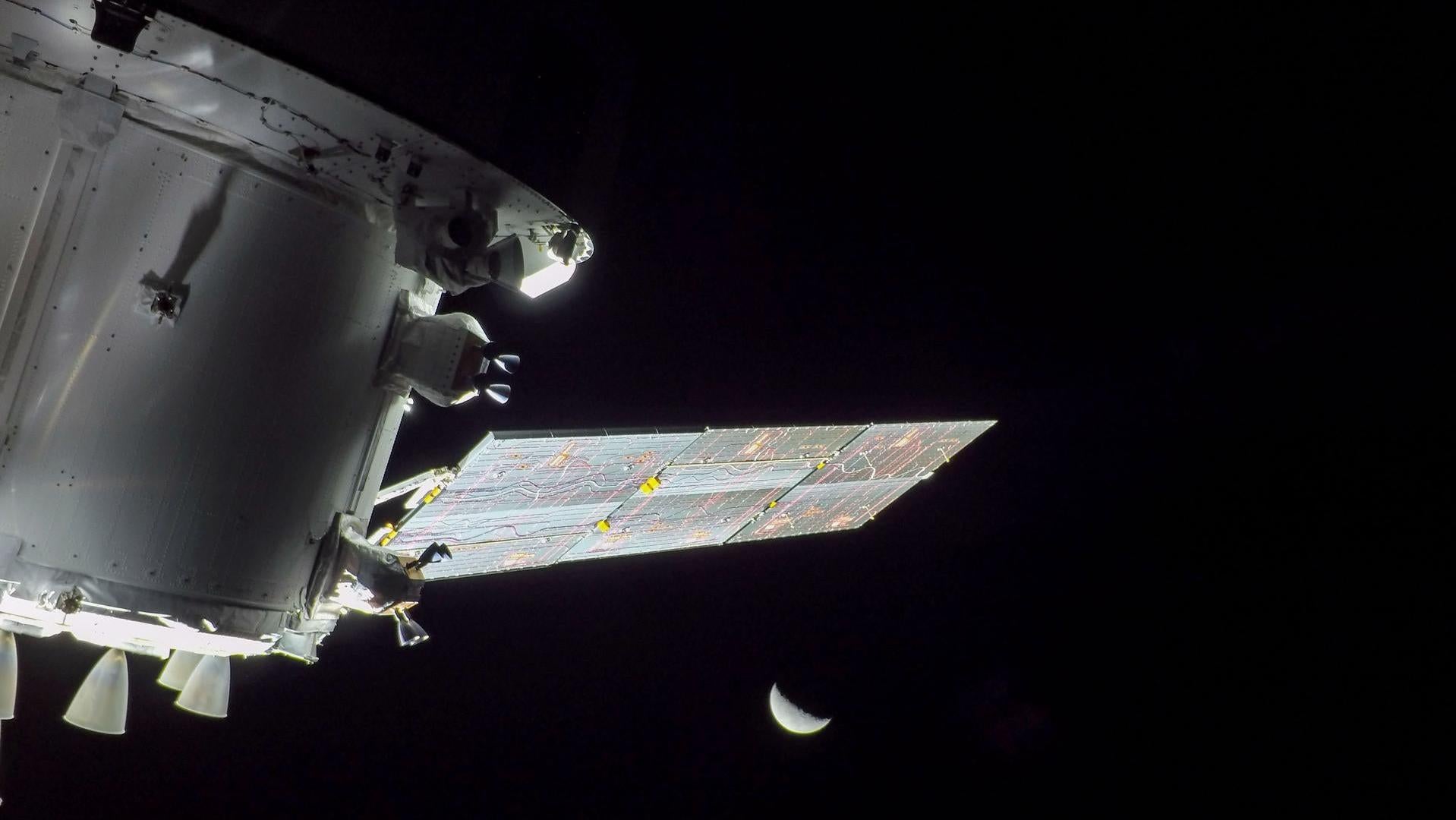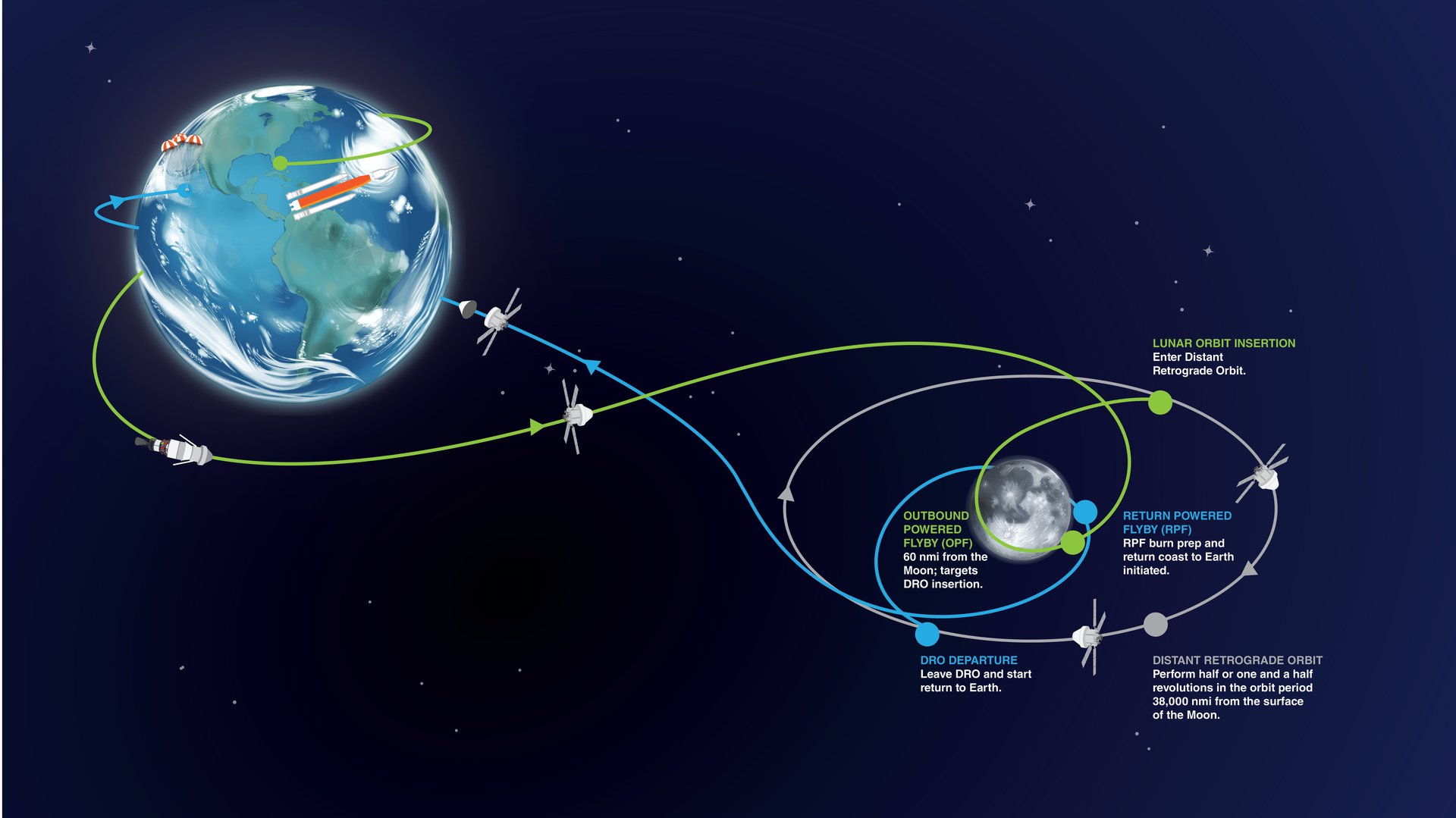NASA's Artemis 1 mission has gone as far as it will go
The uncrewed Orion spacecraft was 270,000 miles from Earth

NASA’s Orion spacecraft is halfway through its 26-day flight to the Moon and back, on an uncrewed mission designed to prove the vehicle can safely carry astronauts on a future mission.
Suggested Reading
On Nov. 26, Orion reached its maximum distance from Earth: 270,000 miles, which is about 30,000 miles past the Moon, eclipsing the record set by the Apollo 13 spacecraft (but not various robotic space probes). The vehicle entered a special orbit around the Moon called a “distant retrograde orbit,” which allows it use very little energy to remain in the vicinity of Earth’s satellite.
Related Content
The Artemis 1 mission is the first major step in NASA’s comprehensive plans to return astronauts to the surface of the Moon by the end of the decade. Officials at the space agency said at press conference on Nov. 28 that, thus far, the mission is going swimmingly, and that they’re adding tasks to Orion’s agenda to further prepare for passenger trips.

What is Artemis 1 doing near the Moon?
A shakedown cruise like this one requires operating the vehicle’s various systems in real-life conditions. That includes communications gear, navigation tools, life support systems, and, of course, the engines. Orion has fired its three different propulsion systems multiple times to maneuver in space. An onboard mannequin dubbed Moonikin Campos (named to honor a NASA engineer who helped save Apollo 13) is equipped with sensors to measure radiation during flight, to ensure that real astronauts don’t get over-exposed.
Not everything has worked perfectly. To determine its position in space, Orion uses “star trackers,” the high-tech equivalent of navigating by astronomical observations here on Earth. First, the trackers were affected by Orion’s own thrusters, which “dazzled” them and prevented them from collecting the data they needed, but NASA engineers were able to figure out a software workaround. Later, the star trackers suffered a “bit flip,” when radiation in space corrupts computer data; however, software in the trackers are prepared for deep space and designed to detect and correct for these errors.
The flight controllers—about 75 people working in three shifts at Johnson Space Center, in Houston—have to use NASA’s Deep Space Network (DSN) to transmit and receive data from Orion. Some hiccups in the process of configuring and scheduling transmissions across the DSN, which also supports missions like the James Webb and Hubble Space Telescopes, underscore that NASA will need to improve the system’s capacity ahead of more elaborate operations in lunar orbit.
Orion is pushing the envelope
Test flights like these are designed to expand the envelope of a vehicle, pushing it to its limits. Mike Sarafin, the Artemis 1 mission manager, said his team will add additional tests to their program. For example, Orion normally flies with its rear facing the sun, in order to power its solar panels and control the temperature onboard. But in one added test, flight controllers will pivot the vehicle on a 20-degree angle across all three axes of motion to assess its performance in different scenarios.
Still, the number one priority for NASA won’t be accomplished until Orion returns to Earth on Dec. 11. The most important test is the demonstration of the heat shields on Orion, which will protect it from burning up when it re-enters Earth’s atmosphere at 32 times the speed of sound. Those conditions can’t be replicated on Earth, but NASA has to make sure it can safely bring home any people it sends into space.
There are, of course, more prosaic reasons for Orion to come back. NASA plans on using a number of the computer systems aboard this spacecraft in the vehicle that will carry astronauts during the Artemis 2 mission. The space agency also plans to reuse the seat that Moonkin Campos is sitting on for a real astronaut.
